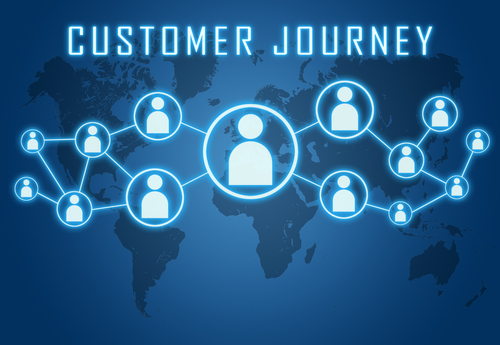Here at CallShaper, we’ll never stop stressing the importance of collecting data on your customers and their interactions with your call center. Data is the key to determining what’s working and what’s not, why some customers remain with your brand for long periods of time and why others leave after short ones. Data is the key to making meaningful changes and to foreseeing possible problems before they arise.
There are different ways that you can compile, aggregate, and represent data depending on how you intend to use it. You can also use the data you collect to create other valuable tools that will provide you with insight into the customer experience. One such tool, or representation of data, that you should consider creating is a customer journey map. Here are some basic guidelines for creating one and why it is helpful.
Building your customer journey map
A customer journey map should encompass all of the customer’s interactions with your call center, big and small. Some of these will be easy to track and record, such as the number of times they call your call center and why, while others will take a little digging. For example, your customer journey map does not start with that first call a customer makes—for many, it starts long before that, with the customer’s discovery of your brand. Depending on whether you want to keep the customer journey map specific to your call center or to build it out to include all interactions with your brand, you would want to start either with their discovery of your brand or their discovery of your call center as a resource available to them. The way customers make these discoveries matters, as it provides insight into the ways different demographics or groups of customers interact with your brand.
From your starting point, you’ll trace the steps a customer typically takes. These may include, but are not limited to, the conversion step (when a sale is made), the customer service step or steps (when the customer gets in touch with the call center in need or service or assistance), and the customer loyalty steps (any further interactions that the customer continues to have with the brand while remaining a customer). While your inbound call center will likely feature heavily in the customer service stage, it can also have interactions with customers that fall into other categories. For each step, you’ll want to include as many details about the customer interaction as possible. For example, for the conversion step: What did they buy? Where did they buy it? Did they have to get in touch with anyone in your call center before making the purchase? Did your company beat out any competitors to earn this sale?
The details with which you fill your customer journey map are the keys to fashioning an image of your typical customer, your ideal customer, and your prospective customer. They tell you how people are finding you, the type of support they most often require, and what happens after that support is given—and that’s just the tip of the iceberg. If you know that your customers fall into a few primary demographics or groups you can create a customer journey map for each one, which will also help you determine the differences and similarities among these groups and how you can use that information to your advantage in future interactions. The more you include, the more you’ll be helping your company and your agents succeed.
The quality assurance and data analytics mechanisms included with CallShaper make it easy to aggregate the data you need to create your customer journey map. To see how, request a demo today.


Leave A Comment